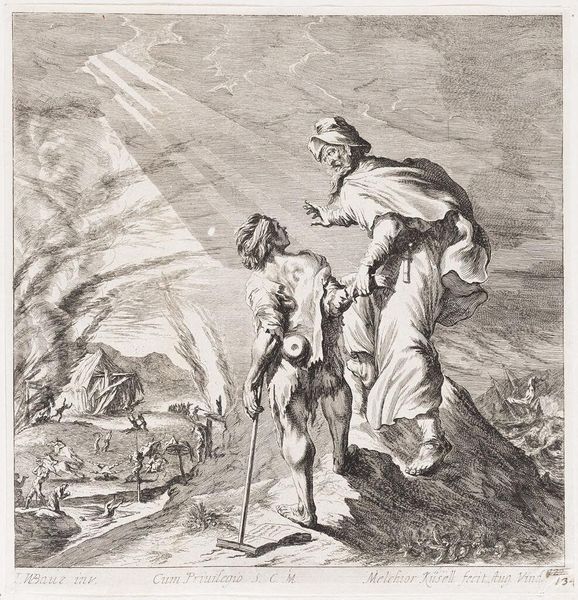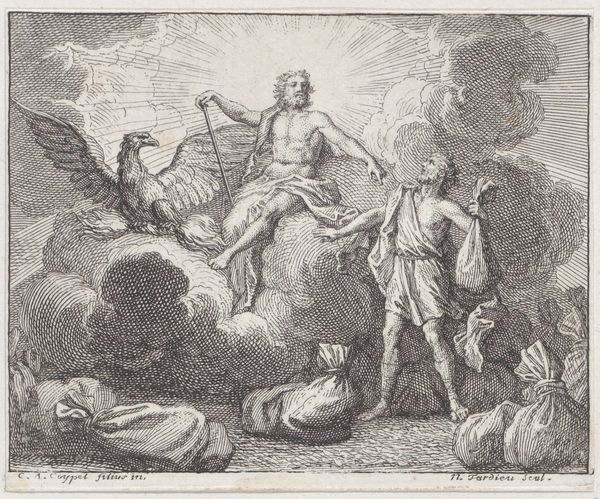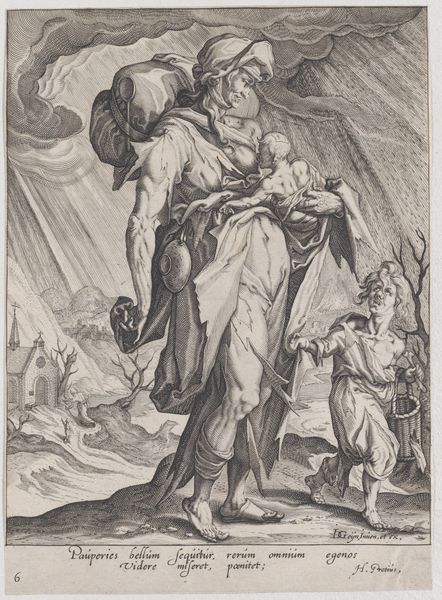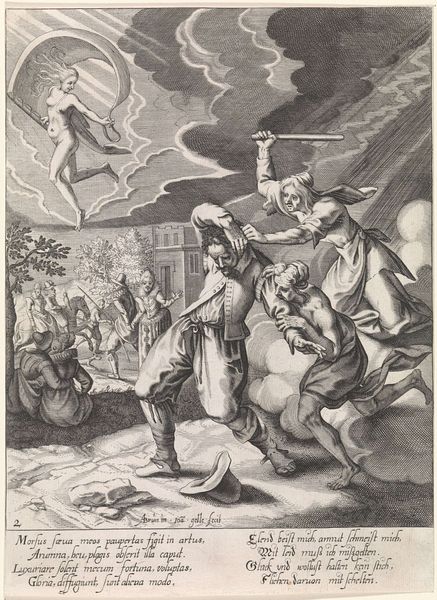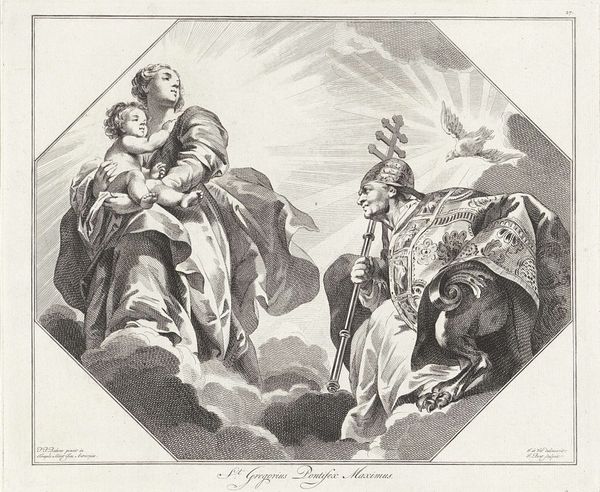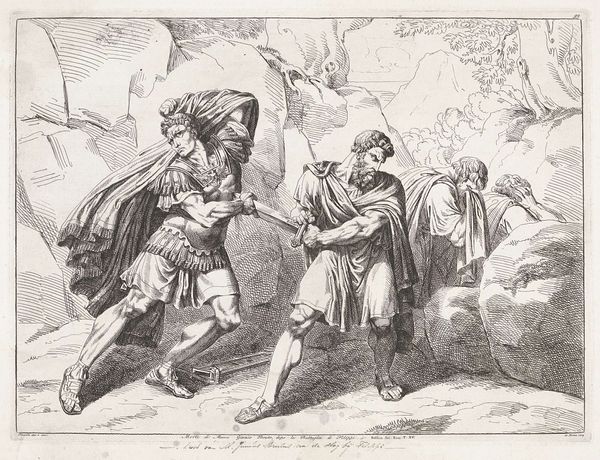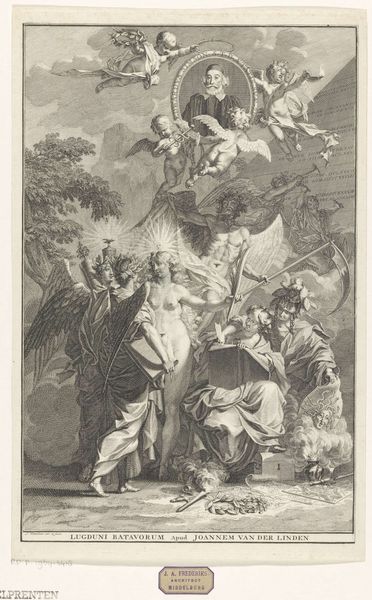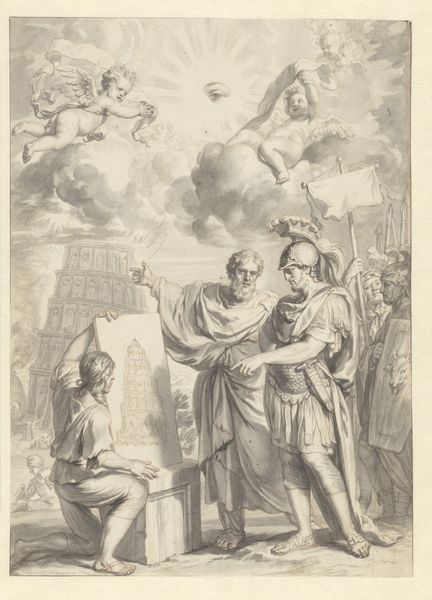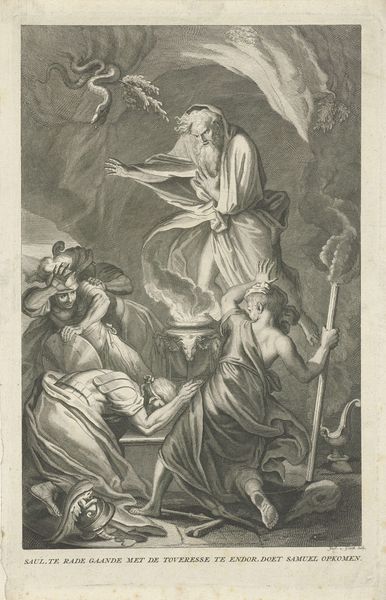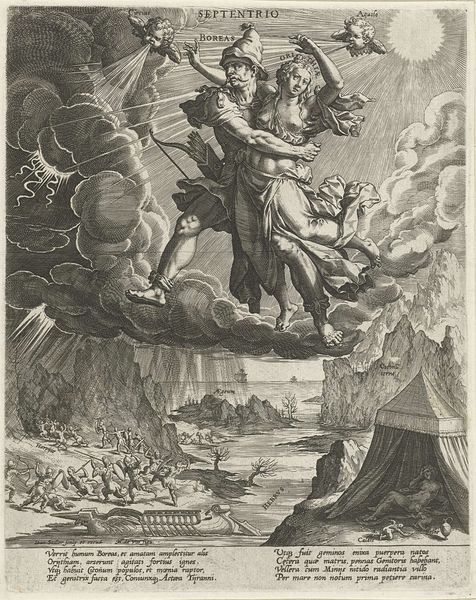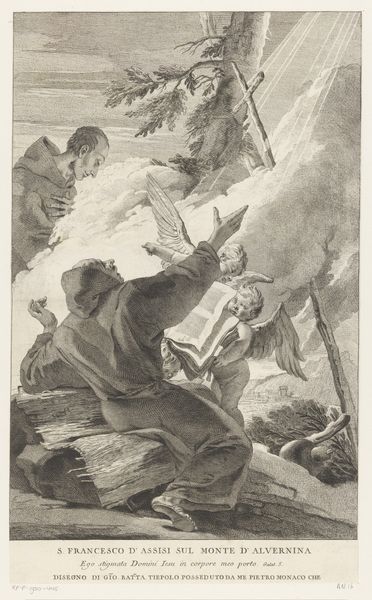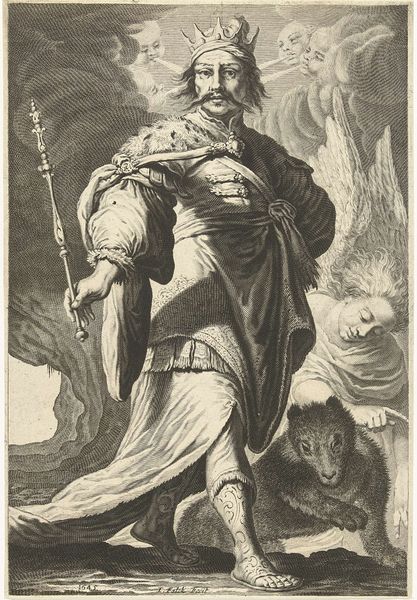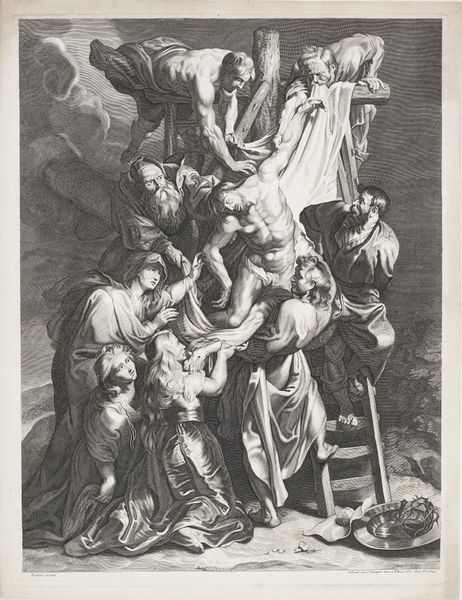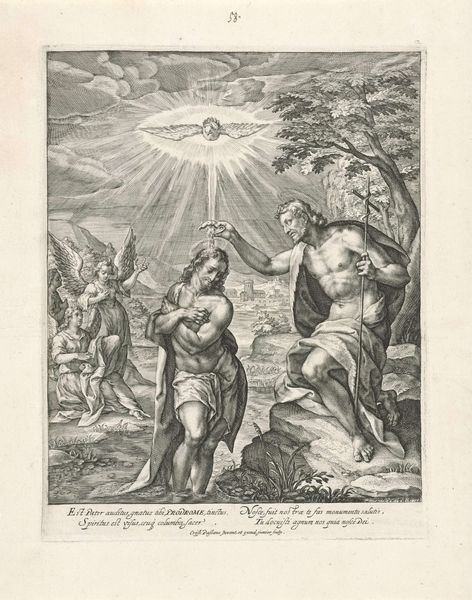
print, engraving
#
ink drawing
#
germany
#
narrative-art
# print
#
figuration
#
line
#
history-painting
#
engraving
Dimensions: 8 5/8 x 8 7/8 in. (21.91 x 22.54 cm) (image)8 3/4 x 8 7/8 in. (22.23 x 22.54 cm) (sheet)
Copyright: Public Domain
Curator: This 18th-century print, titled "Scene of Pillaging," presents a stark vision of violence and upheaval, created by an anonymous artist, now residing here at the Minneapolis Institute of Art. What strikes you first? Editor: It’s incredibly bleak. The high contrast in the engraving amplifies the chaos. My eyes are immediately drawn to the plumes of smoke and what appear to be figures in distress in the background. It conveys a strong sense of loss and despair. Curator: Absolutely. The work’s impact stems from its historical context. The print format allowed for wide distribution, making powerful narratives accessible to a broad audience, serving to remind the population of the true brutalities of military actions upon civilians. Editor: And there's such a deliberate composition. The eye is led upward from the pillaged town towards the two prominent figures on the rise of land. This placement clearly intends for viewers to recognize that these characters occupy a separate moral sphere, perhaps removed from all the bloodshed. Note their elaborate costuming. The elder's commanding gesture only underscores the scene's symbolic significance. Curator: Precisely. It invites us to consider the societal structures that perpetuate such conflict and who are the benefactors of war. The work possibly seeks to highlight the complicity or, at least, the detachment, of figures of authority in the face of suffering. This relates to many historical records from this time. Editor: Beyond the societal critique, consider the figures' body language. There is something primal. Their posture conveys trauma, defeat. Notice the symbol that they carry, in fact. A constant reminder of hardship that cannot be shaken. Even as this trauma takes its toll, hope endures--or rather the possibility of it remains. Even just in his gaze. It tells a story beyond the immediate pillaging. Curator: A point well-taken. The print then doesn't just depict violence, but its lasting psychological and social scars. It asks what role power and political imagery plays in that tragedy. Editor: Leaving me to wonder if art even begins to touch such topics. Still, I think you're right to consider art’s potential to challenge perspectives on conflict. Curator: Indeed. The artist, though unknown to us by name, succeeded in creating a space for necessary historical reflection.
Comments
No comments
Be the first to comment and join the conversation on the ultimate creative platform.
